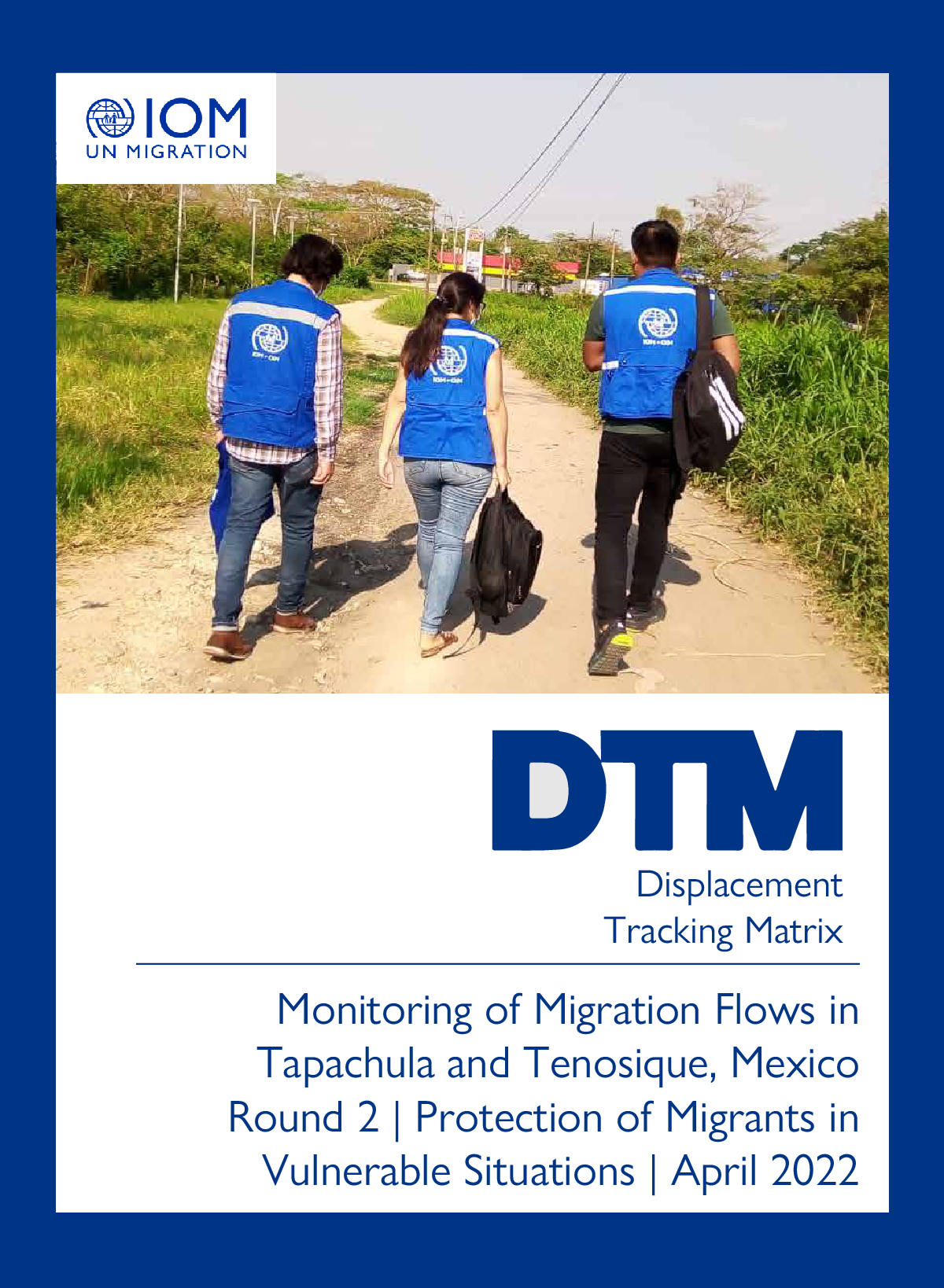-
Countries
-
Data and Analysis
-
Special Focus
-
Crisis Responses
Mexico - Flow monitoring of migrants in Tapachula and Tenosique, Round 2 (April 2022)

Contacto
Laura Canché, lcanche@iom.int; Miranda Mora, mirmora@iom.int
Idioma
English
Ubicación
Mexico
Fecha de instantánea
Apr 01 2022
Apr 30 2022
Actividad
- Flow Monitoring Survey
- Mobility Tracking
- Event Tracking
Context
Tapachula (State of Chiapas), and Tenosique (State of Tabasco), are the main receiving cities for migrants in southern Mexico. In 2021, the arrival records of the migrant population that entered Mexico through the southern border were broken, according to the records of the Mexican Commission for Refugee Assistance (COMAR), which reported 89,636 applications for recognition of refugee status in Tapachula and 7,153 applications in Tabasco.
During the second semester of the year in question, the services for migrants in the city of Tapachula presented greater demand, in the month of November the National Institute of Migration (INM) through the provision of buses transferred migrants to other states such as Puebla , Querétaro, Hidalgo, State of Mexico, Guanajuato, Sonora, Colima and Jalisco to continue with their procedures. According to the Migration Policy Unit (UPMRIP), during 2021, 307,679 events of foreigners presented or channeled by the immigration authority were registered, of which 76,333 were registered in Chiapas and 44,008 in Tabasco.
Methodology
The Displacement Tracking Matrix (DTM) is a system to track and monitor displacement and population mobility. This study used the mobility tracking and surveys components, which are designed to quantify the presence of migrants and generate data for understanding their socioeconomic and migratory characteristics.
The study consists of three rounds of monitoring. This report gives the results of round two, corresponding to April 2022, and focuses on the findings regarding the protection of vulnerable migrants.
The cities serving as study areas are Tapachula in Chiapas and Tenosique in Tabasco, both border sites in southern Mexico.
The round two surveys of migrants were conducted during the first week of April from Monday, April 4, to Friday, April 8. In both cities, spaces such as parks, plazas, shelters, and shelter surroundings were selected as high migrant concentration points.
Out of a total of 323 interviews, 321 were effective and two were invalid (the required consent was not given); 69% of the interviews were conducted in Tapachula and 31% in Tenosique. Probability sampling, clustered by high migrant concentration points, was used.
